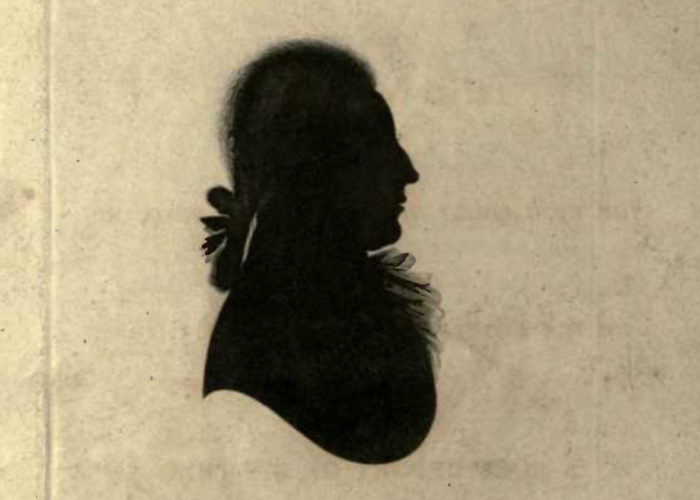Silhouette of Thomas Muir
Theme: Political Revolution, The arts in the Age of Revolution, Challenging law and order: British riots and reforms, Ireland's uprising (1798), British politics in the Age of Revolution, People in motion: exiles and opportunities
Thomas Muir was a radical, who campaigned for political reform in Scotland. He was eventually accused of sedition and transported to Australia, following one of the most notorious and controversial trials in Scottish history. He became known as the father of Scottish democracy and one of Scotland’s five ‘political martyrs’.
Thomas Muir (1765-1799) was born in Glasgow into a relatively wealthy land-owning family. He studied at the Universities of Glasgow and Edinburgh and established a strong reputation as being anti-establishment and a man of principle. Along with his associates, Muir founded the Scottish Association of the Friends of the People in 1792, to campaign for political reform – a fairer political system that would give ordinary people the right to vote and the right to stand for parliament.
Muir also became involved with the United Irishmen. This group wanted independence from British rule for Ireland. They were considered treasonous by the government and had been made illegal. The Government saw Muir’s association with the United Irishmen as a sign that he had a similar plan to fight for Scottish independence from Britain.
The French Revolution had made the British Government extremely fearful. Afraid of a similar uprising in Britain, individuals and groups suspected of radical activity were dealt with quickly and harshly. This, along with Muir’s association with the United Irishmen led to his arrest in 1793. He was tried for sedition before a corrupt jury and a biased judge and sentenced to fourteen years transportation to Australia – an extremely harsh sentence secondary only to hanging.
After some time in Australia, Muir escaped on an American ship and crossed the Pacific, only to find himself imprisoned by the Spanish authorities in Mexico and then Cuba, and transported back to Spain. He eventually ended up in republican France where he was hailed as a revolutionary hero, met with Thomas Paine, and began to seek support for other Scottish and Irish nationalists and reformers. He died there, suddenly, in 1799.
Did You Know?
Creating ‘silhouette’ portraits by cutting a profile from black card became very popular in the mid-late 1700s. A skilled artist could cut a highly accurate ‘bust’ like this one in a matter of minutes. Later, artists drew an outline on paper, then painted it in – just as quickly.
Use our Classroom resources to investigate this object and the theme of Protest further.
Highlights:
- Using objects, artworks and other sources to find out about the past
- Enquiry: Why did workers protest in the Age of Revolution?
- Twitter campaigns
And much more…
Sources & acknowledments
This object description and its related educational resources were researched and written by our team of historians and education specialists. For further information see the item’s home museum, gallery or archive, listed above.
-
Education overview
You can access a range of teachers resources related to this object and more on our education page.
Please also see our glossary of terms for more detailed explanations of the terms used.
-
Curatorial info
- Production Date: 1831
- Material: Ink and paper
- Creation Place: Glasgow
- Original record
-
Use this image
Image courtesy of archive.org
You can download this image for personal and educational use but please take note of the license type and rights holder information.
- License Type:
No visible notice of copyright.
- License Type:



